Sound Absorption Characteristics of Aluminum Foams Treated by Plasma Electrolytic Oxidation
Abstract
:1. Introduction
2. Results and Discussion
2.1. Morphology of the Foams
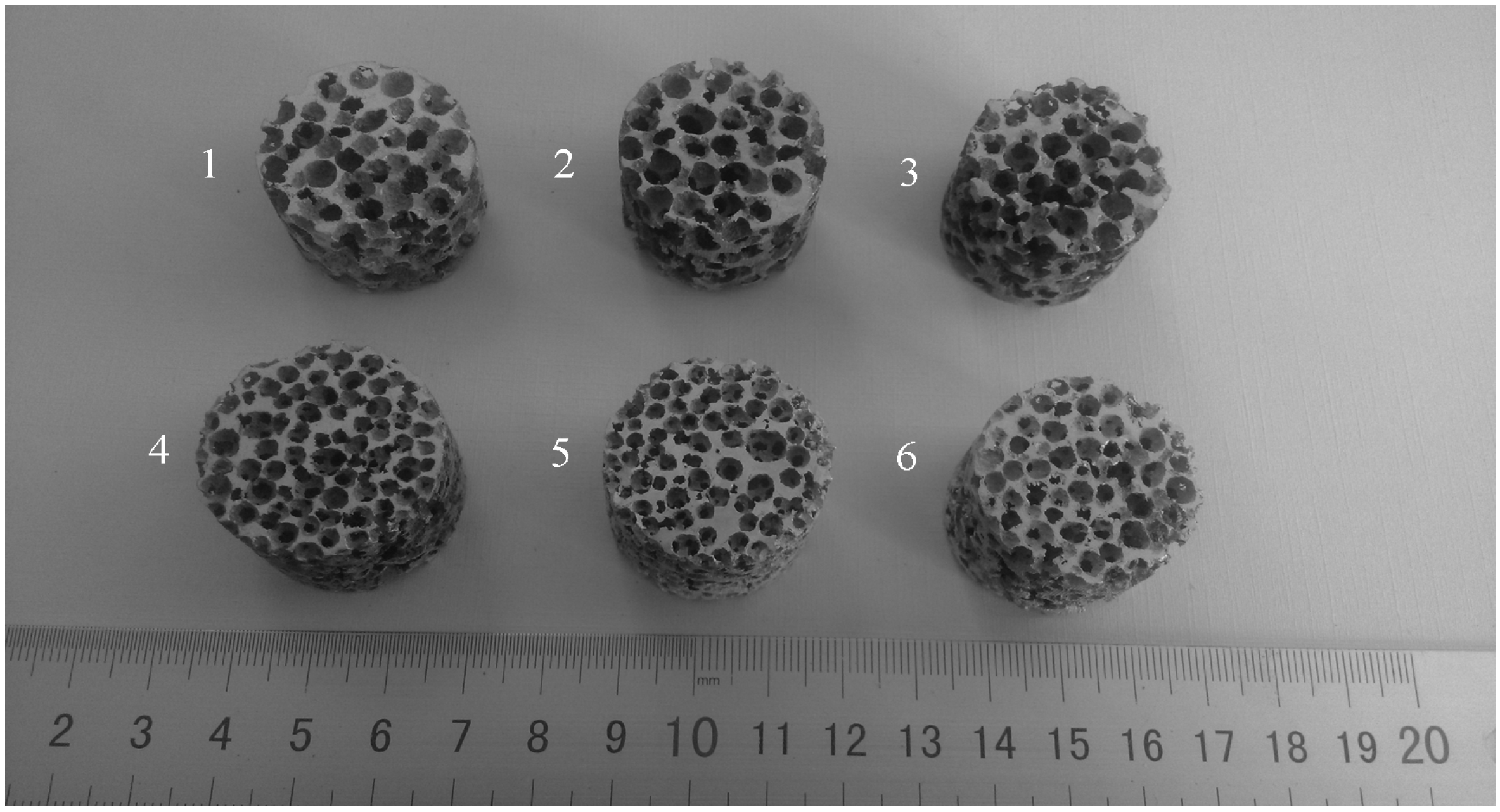
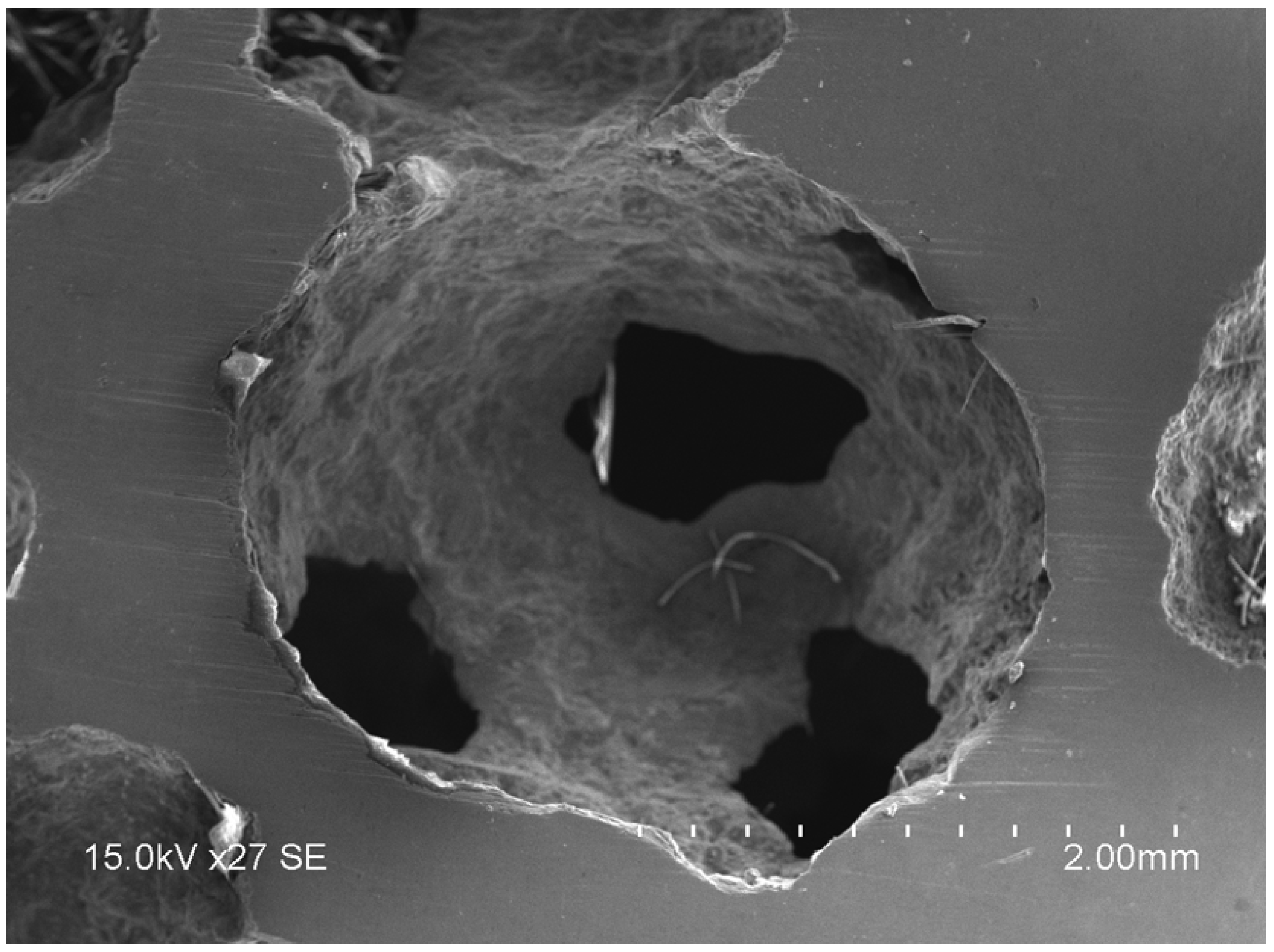
2.2. Microstructure of the PEO Coating
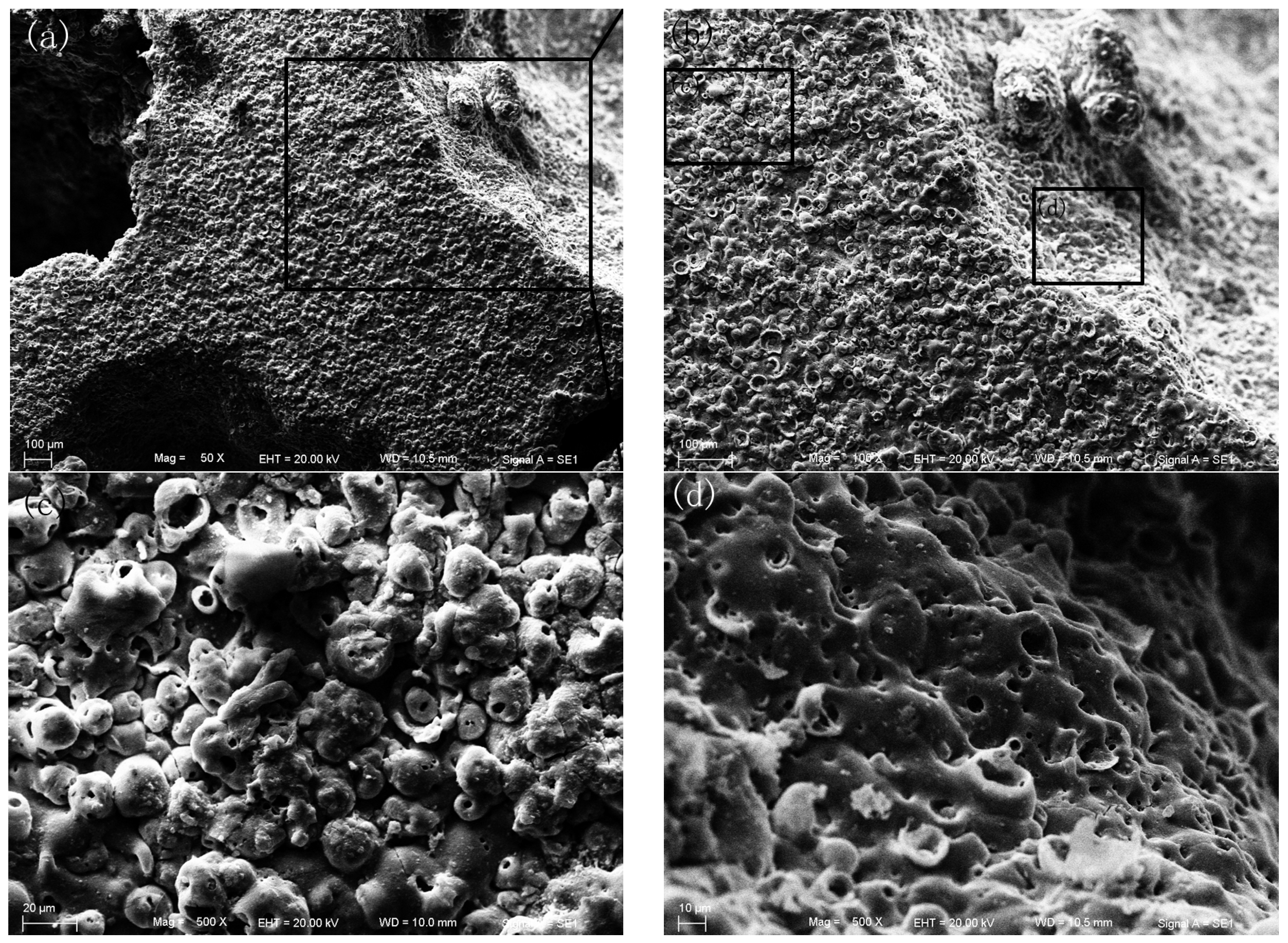
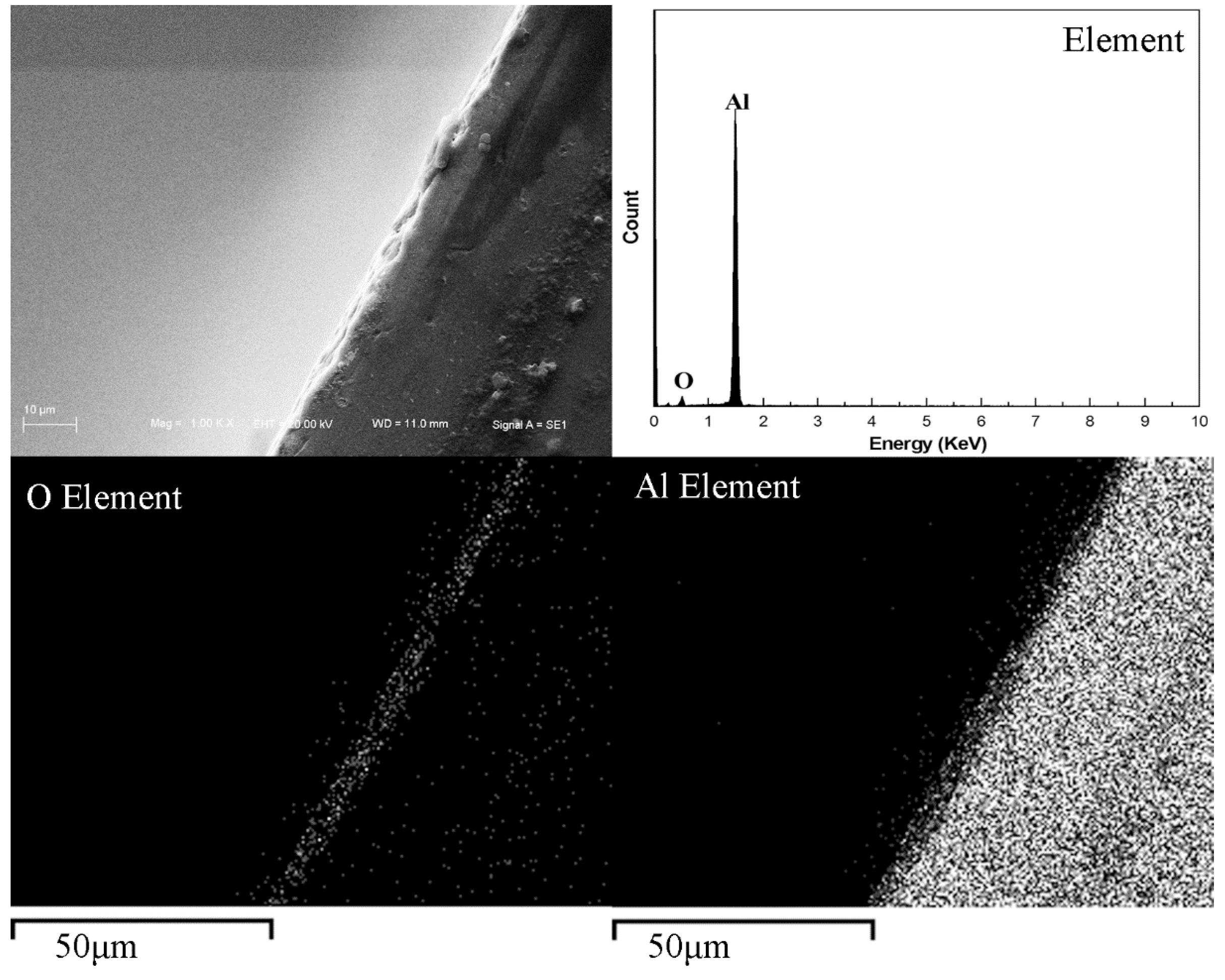
2.3. XRD Study of the PEO Coating
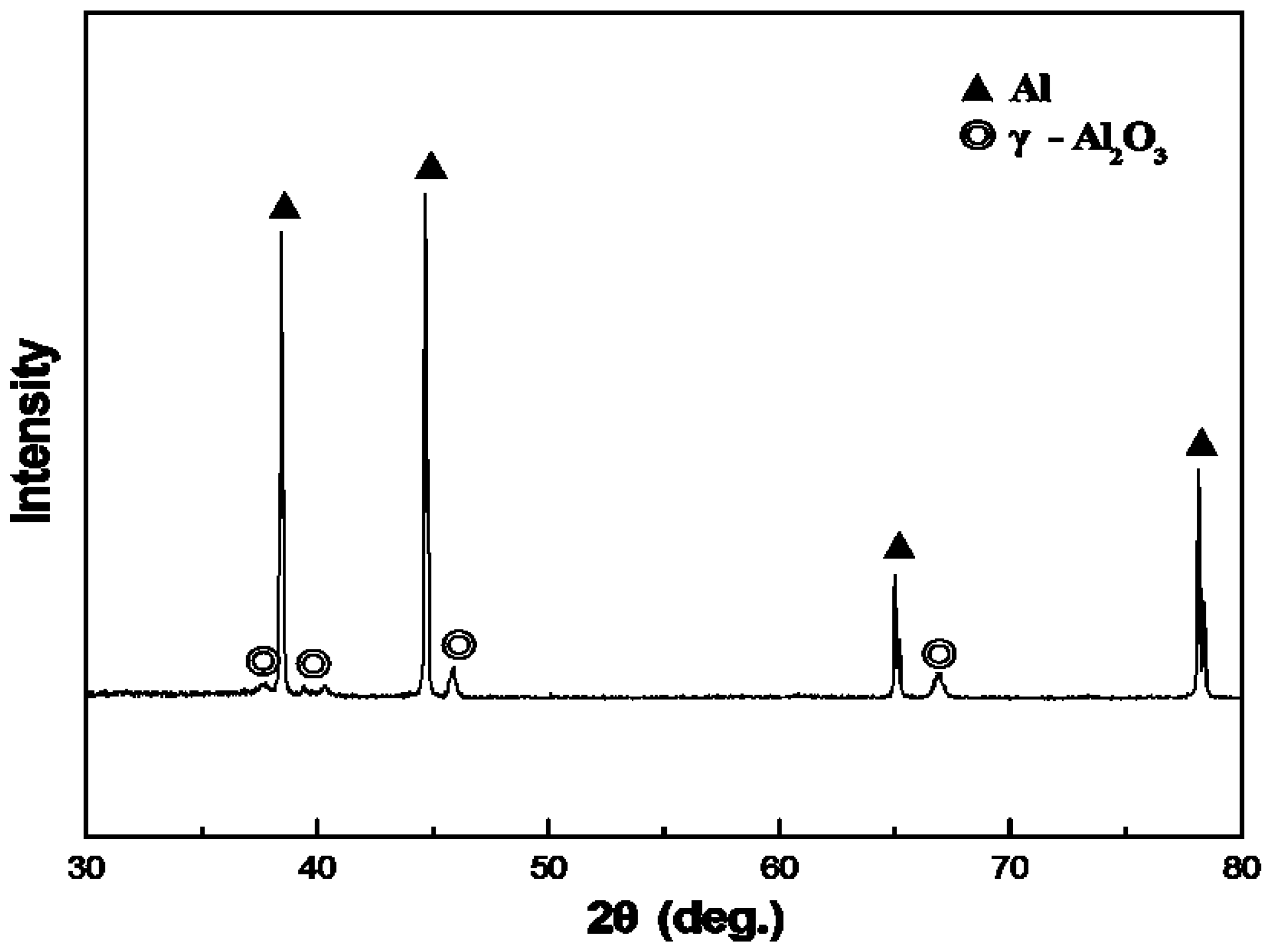
2.4. Sound Absorption Characteristics
2.4.1. Effect of Pore Size on the Sound Absorption of the Foams
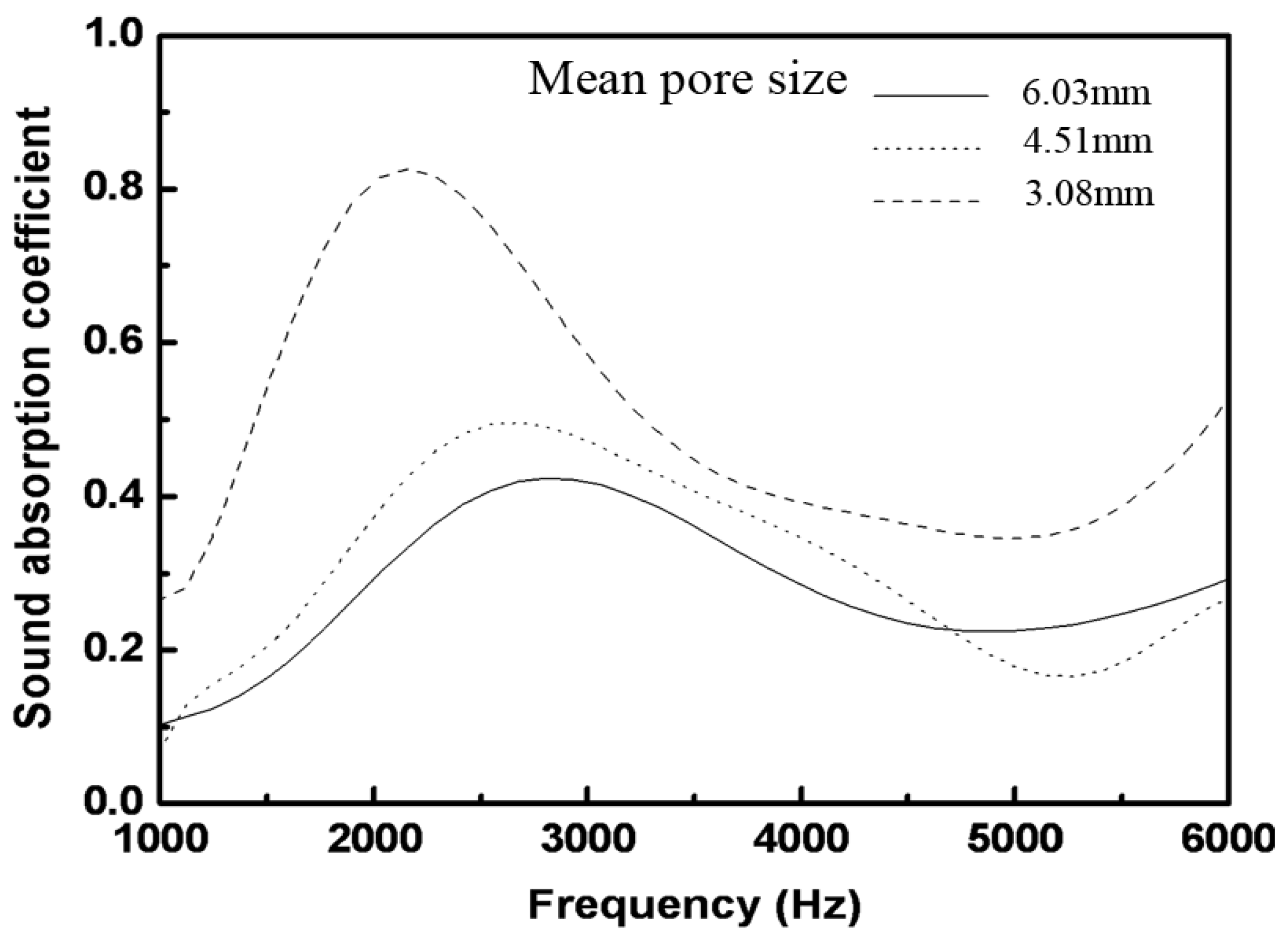
2.4.2. Effect of Porosity on Sound Absorption of the Foams
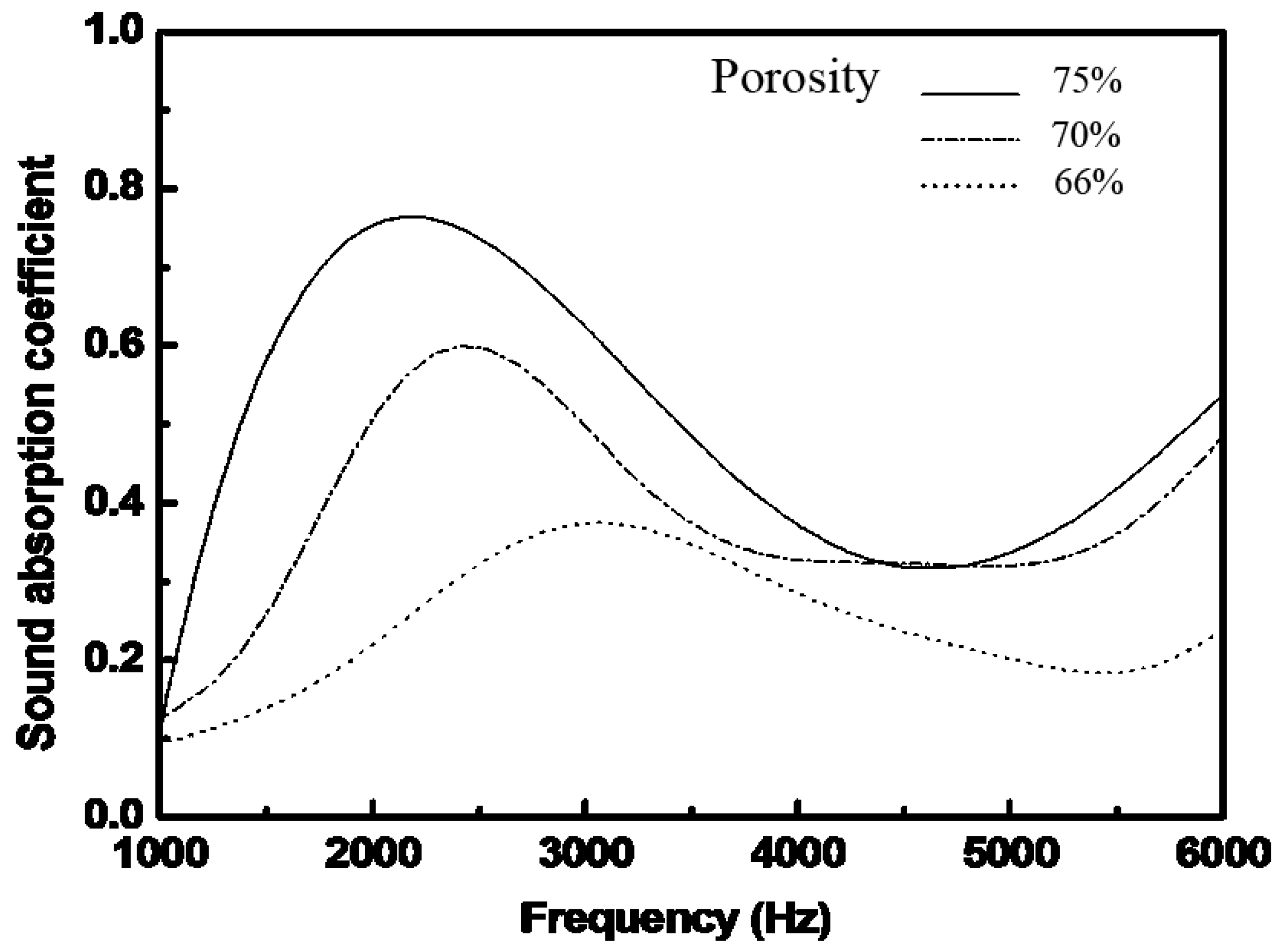
2.4.3. Effect of PEO Treatment on Sound Absorption of the Foams

3. Experimental Section
3.1. Preparation and PEO Treatment of the Foams
3.2. Material Characterization
3.3. Measurements of Sound Absorption Coefficient

4. Conclusions
Acknowledgments
Author Contributions
Conflicts of Interest
References
- Banhart, J. Manufacture, characterization and application of cellular metals and metal foams. Prog. Mater. Sci. 2001, 46, 559–632. [Google Scholar] [CrossRef]
- Gibson, L.J.; Ashby, M.F. Cellular Solids: Structure and Properties, 2nd ed.; Cambridge University Press: Oxford, UK, 1997. [Google Scholar]
- Degischer, H.P.; Kriszt, B. Handbook of Cellular Metals: Production, Processing, Applications; Wiley-Vch-Verlag: Weinheim, Germany, 2002. [Google Scholar]
- Lu, T.J.; Chen, F.; He, D.P. Sound absorption of cellular metals with semiopen cells. J. Acoust. Soc. Am. 2000, 4, 1697–1709. [Google Scholar] [CrossRef]
- Li, Y.; Wang, X.; Wang, X.; Ren, Y. Sound absorption characteristics of aluminum foam with spherical cells. J. Appl. Phys. 2011, 110. [Google Scholar] [CrossRef]
- Wang, X.F.; Wang, X.F.; Wei, X.; Han, F.S.; Wang, X.L. Sound absorption of open celled aluminium foam fabricated by investment casting method. Mater. Sci. Technol. 2011, 27, 800–804. [Google Scholar] [CrossRef]
- Masataka, H.; Tetsunume, K.; Youqing, C.; Hiromu, K.; Mamoru, M. Sound absorption characteristics of porous aluminum fabricated by spacer method. J. Appl. Phys. 2006, 100. [Google Scholar] [CrossRef]
- Masataka, H.; Tetsunume, K.; Youqing, C.; Hiromu, K.; Mamoru, M. High sound absorption of porous aluminum fabricated by spacer method. Appl. Phys. Lett. 2006, 88. [Google Scholar] [CrossRef]
- Ren, Y.; Wang, K.; Zhu, B.; Wang, X.F.; Wang, X.F.; Han, F.S. Synthesis of ZnO micro-rods on the cell walls of open celled Al foam and their effect on the sound absorption behavior. Mater. Lett. 2013, 91, 242–244. [Google Scholar] [CrossRef]
- Khan, R.H.U.; Yerokhin, A.; Li, X.; Dong, H.; Matthews, A. Surface characterisation of DC plasma electrolytic oxidation treated 6082 aluminium alloy: Effect of current density and electrolyte concentration. Surf. Coat. Technol. 2010, 205, 1679–1688. [Google Scholar] [CrossRef]
- Li, H.X.; Rudnev, V.S.; Zheng, X.H.; Yarovaya, T.P.; Song, R.G. Characterization of Al2O3 ceramic coatings on 6063 aluminum alloy prepared in borate electrolytes by micro-arc oxidation. J. Alloy Compd. 2008, 462, 99–102. [Google Scholar] [CrossRef]
- Yucel, G.; Ali, E.G. The effect of Zn on the micro arc oxidation coating behavior of synthetic Al-Zn binary alloys. J. Alloy Compd. 2012, 525, 159–165. [Google Scholar] [CrossRef]
- Cui, S.H.; Han, J.M.; Du, Y.P.; Li, W.J. Corrosion resistance and wear resistance of plasma electrolytic oxidation coatings on metal matrix composites. Surf. Coat. Technol. 2007, 201, 5306–5309. [Google Scholar] [CrossRef]
- Nie, X.; Leyland, A.; Song, H.W. Thickness effects on the mechanical properties of micro-arc discharge oxide coatings on aluminium alloys. Surf. Coat. Technol. 1999, 116–119, 1055–1060. [Google Scholar] [CrossRef]
- Yan, Y.Y.; Sun, J.F.; Han, Y.; Li, D.C.; Cui, K. Microstructure and bioactivity of Ca, P and Sr doped TiO2 coating formed on porous titanium by micro-arc oxidation. Surf. Coat. Technol. 2010, 205, 1702–1713. [Google Scholar] [CrossRef]
- Laleh, M.; Sabour, R.A.; Shahrabi, T.; Shanghi, A. Effect of alumina sol addition to micro-arc oxidation electrolyte on the properties of MAO coatings formed on magnesium alloy AZ91D. J. Alloy Compd. 2010, 496, 548–552. [Google Scholar] [CrossRef]
- Liu, J.A.; Gao, F.; Rao, Y.Q.; Liu, Y. Compressive Properties of Aluminum Foams Produced by Replication Route Using Spheroidal Calcium Chloride as Space Holder. Mater. Trans. 2014, 12, 1906–1908. [Google Scholar] [CrossRef]
- Liu, J.A.; Zhu, X.Y.; Huang, Z.Q.; Yu, S.R.; Yang, X.Z. Characterization and property of microarc oxidation coatings on open-cell aluminum foams. J. Coat. Technol. Res. 2012, 9, 357–363. [Google Scholar] [CrossRef]
© 2015 by the authors; licensee MDPI, Basel, Switzerland. This article is an open access article distributed under the terms and conditions of the Creative Commons by Attribution (CC-BY) license (http://creativecommons.org/licenses/by/4.0/).
Share and Cite
Jin, W.; Liu, J.; Wang, Z.; Wang, Y.; Cao, Z.; Liu, Y.; Zhu, X. Sound Absorption Characteristics of Aluminum Foams Treated by Plasma Electrolytic Oxidation. Materials 2015, 8, 7511-7518. https://doi.org/10.3390/ma8115395
Jin W, Liu J, Wang Z, Wang Y, Cao Z, Liu Y, Zhu X. Sound Absorption Characteristics of Aluminum Foams Treated by Plasma Electrolytic Oxidation. Materials. 2015; 8(11):7511-7518. https://doi.org/10.3390/ma8115395
Chicago/Turabian StyleJin, Wei, Jiaan Liu, Zhili Wang, Yonghua Wang, Zheng Cao, Yaohui Liu, and Xianyong Zhu. 2015. "Sound Absorption Characteristics of Aluminum Foams Treated by Plasma Electrolytic Oxidation" Materials 8, no. 11: 7511-7518. https://doi.org/10.3390/ma8115395





